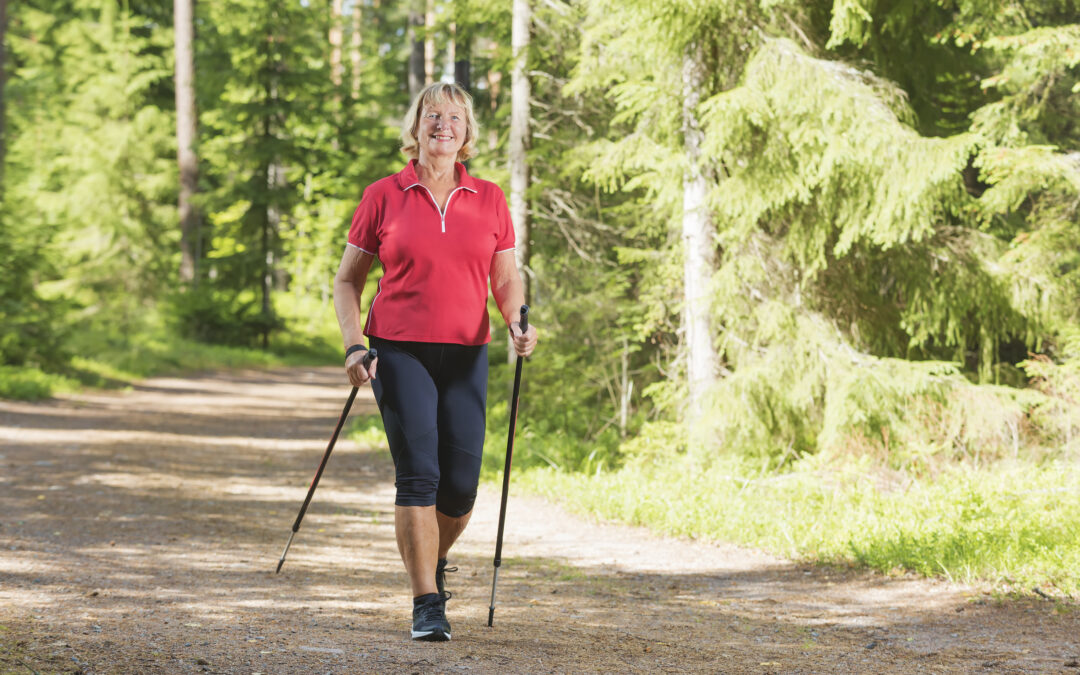Is Hiking with Poles Better??
What are the benefits of hiking with poles?? This is a regular question I get and something quite topical amongst hikers generally. While adequate levels of fitness are always preferred before you set off on a hiking adventure, I also have sympathy for those tackling a trail a little longer than expected, or a little harder, or when there is an unexpected tweak of a knee, hip or ankle. Personally, I am a fan of hiking poles, particularly from a balance and stability point of view. but I had never even considered using poles until I started training for high altitude hikes. Once you start putting your hand up for extended multi-day hikes to out of the way places, I feel using some kind or pole or walking stick is very advantageous even for the experienced and fit hiker. Here are my top 3 tips for hiking with poles.
Hiking pole set up and how to use them
Hiking poles should be set to hip height, so the elbow angle is not less than 90 degrees. This avoids unnecessary strain on the shoulders. On an ascent you may like them a little shorter, and you can lengthen your hiking poles on descent so you are not leaning over too much as this can place strain on your back particularly if you pack is heavy.
Keep the elbows tucked in and don’t over reach – think of using your hiking poles more to keep you balanced rather than hauling you up a hill as this can place strain on the shoulders.
You can swing your poles opposite arm to foot particularly on the flat. You can use both simultaneously – find a rhythm and method that suits your body (don’t over think it).
Climbing stairs – both hiking poles go up first, then step
Descending stairs – place both poles down first (remembering no to overreach) and step down to meet the pole with your feet.
The benefits of using hiking poles are around managing your balance and fatigue levels. I’ve seen many hikers overextend their capabilities and start to trip and stumble more frequently. However, once they try them they feel a little steadier and sure footed. Don’t misunderstand me and think that use of hiking poles means you do not have to be fit for the hike, but they are a valuable addition to hiking and can assist you think your balance and stability puts you at risk of falling.
What do I look for when buying hiking poles?
Hiking poles range greatly in price. Essentially what you get when you pay more is a hiking pole that is stronger, lighter, and packs down smaller than a cheaper pole. These qualities are highly desirable if you are travelling overseas or if you need to minimise the weight of all items you are carrying. I use Exped poles and from memory they cost around $250. They are super light, strong and pack down to 30 cm. I have clients who have purchased poles for around $50 a pair and they have been equally happy with them.
What are essential features of hiking poles?
- rubber stoppers to go on the tip (these reduce slip and harm to the environment)
- shaped grips that have some softness (cork or foam) are more comfortable to hold on to
- adjustable (essential)
Got sore knee’s from hiking? Visit my article on hiking fitness exercises that will reduce sore knees from hiking
If you’d like to download my free hiking fitness resources you’ll find them here
or my free handout on suitable hiking food? Go here
#wheretonext
Jo Cordell-Cooper operates the award winning business Jo CC Holistic PT, offers personal training, stress management strategies, preparation for hiking workouts, and adventure travel to multi-day hikes, locally and overseas. Jo’s personal training private gym is in Geilston Bay, just east of Hobart, but you can work with her online too. Join us on facebook in my free group Holistic Personal Training for more healthy lifestyle tips and tricks.



